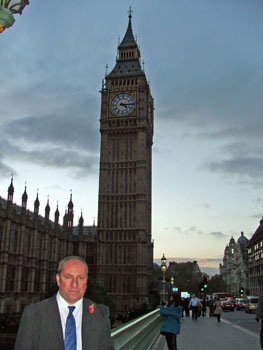Tristan da Cunha Renewable Energy Project
|
Solar Farm and Solar Water Heaters generating renewable energy as the project gets underway successfully Report from Enviroconsult's Tristan Manager Marc Escudier with photos from Aniket Sardana |
|
|
Three solar water heaters have been installed at Tristan homes belonging to Robin and Dawn Repetto, Martin and Iris Green and Simon and Natasha Glass. All are working successfully and so saving bottled gas which is used to heat water in Tristan houses. A Solar Farm has been constructed west of the fishing factory on Hottentot Fence field. It consists of 26 solar panels, aligned to face the northern midday sun and each capable of generating 250 watts, so a combined capacity of 6.5kW. The connection to Tristan's electricity grid was made on 30th April 2015 and by 5th May Marc reports that 100kW hours had been generated by the sun. Marc said 'This is a good first step to a greener Tristan'. |
|
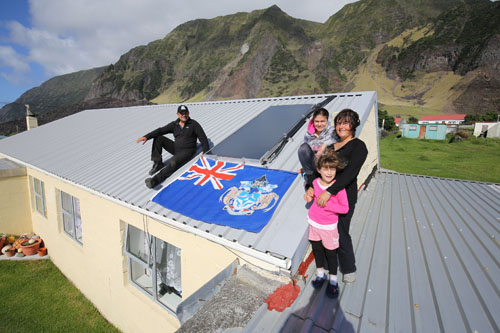 |
|
| Robin, Dawn, Amber and Jade Repetto on the roof of their Tristan home by their new solar panel water heater and the Tristan flag. |
|
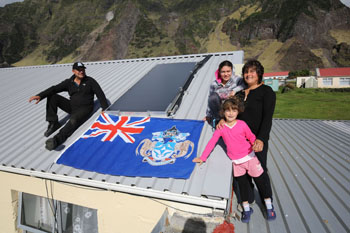 |
Marc Escudier is in his second year on Tristan and manages the CTBTO monitoring station : see CTBTO Station. |
 |
|
| Left: Another view of the Repetto family taken on 24th April. They left Tristan a few days later aboard the RFA Gold Rover on the first leg of a journey to the Isle of Man where Robin and Dawn will undertake training. | |
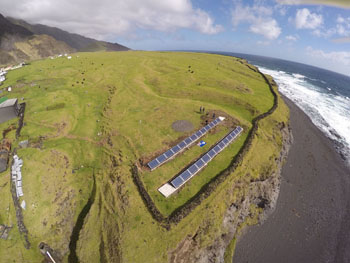 |
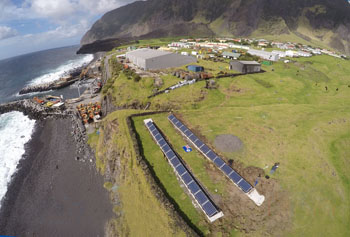 |
| Below: Amazing views of the Solar Farm taken from Aniket Sardana's drone | |
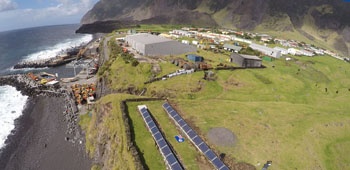 |
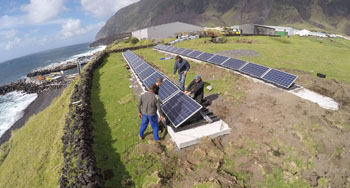 |
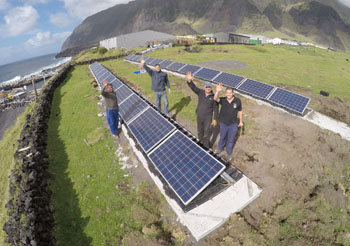 |
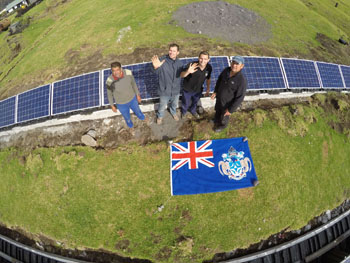 |
|
Key workers on the project In these four 'drone' photos by Aniket Sardana are (as shown in the image below left to right): Jack Green, Jody Squibb, Marc Escudier and Robin Repetto. Justin Green also worked as an electrician on the project but was absent when the images were taken on 24th April 2015. |
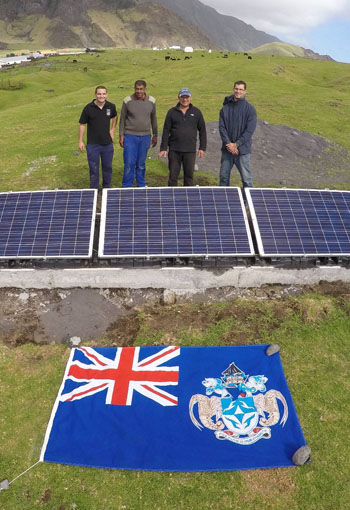 |
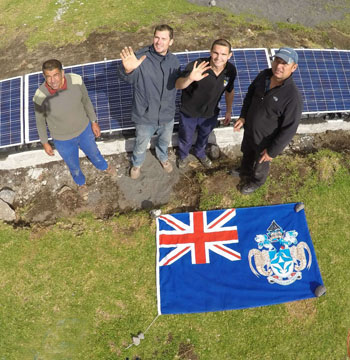 |
|
| Footnote: Renewable Energy was first used on Tristan da Cunha in the 1980s when a wind generator and roof solar panels were installed. To find out more see: Renewable Energy in the 1980s | |
2015 Renewable Energy Projects
Report from Tristan Administrator Alex Mitham on 31st October 2014
The Tristan da Cunha Government has recently signed a contract with Enviroconsult (who manage the CTBTO station on the island) to trial two renewable energy systems in 2015. The long term goal is that potentially up to 40% of energy could be from renewable means within the next 5 years.
The project will be based on a small solar farm and three solar water heaters for individual homes. The island will be looking at a combination of technologies to see which is the most practical for Tristan da Cunha.
The small pilot project is intended to test theories and identify solutions to becoming more self sustainable in energy for future generations. Several technologies were trialled in the 1980s, such as a wind turbine, but technology has moved on, and it will be important to see where savings can be made for the community.
The project is being funded through the EU Development Fund, and further plans are being drawn up to identify other technologies to test in the future. Once all the trials have been completed, we should be in a stronger position to see whether the target of 40% renewable energy by 2020 is achievable for such a remote isle.

